I'm trying to get my react-native project to run on an android emulator while on a Mac operating system. It worked fine on my windows.
On my Mac, I go to terminal and type react-native run-android and I get the error message:
$ react-native run-android
Scanning 616 folders for symlinks in /Users/John/Documents/myreactnativeproject/node_modules (17ms)
Starting JS server...
Building and installing the app on the device (cd android && ./gradlew installDebug)...
Could not install the app on the device, read the error above for details.
Make sure you have an Android emulator running or a device connected and have
set up your Android development environment:
https://facebook.github.io/react-native/docs/android-setup.html
I type adb devices and I see
List of devices attached
emulator-5554 unauthorized
I go into the settings of my android emulator, I go to Settings Build Number to tap it several times to enable Developer options. In developer options, I enabled USB debugging, disabled Verify apps over USB, and left everything else as default. I shut down my android studio and emulator, restarted it. But still, the same issues mentioned above.
What am I doing wrong?
EDIT
I just connected my android phone to my Mac. When I run adb devices, I see this result
List of devices attached
YLEDU16B18004313 device
But when I run react-native run-android, I get the same error as above. So maybe there is something wrong with my react-native set up instead?
EDIT 2
I was able to deploy the app to my android phone by adding these extra steps
chmod 755 android/gradlewFor some reason, when I type
echo $ANDROID_HOMEinto the terminal, I get the result/Users/John/Library/Android/sdk. But if I add theecho $ANDROID_HOMEline to myandroid/gradlewfile, it echoes nothing. And when I run thereact-native run-androidcommand, the compiler complains that ANDROID_HOME is not defined. So I have to typeexport ANDROID_HOME=/Users/John/Library/Android/sdkagain, then running thereact-native run-androidcommand works and deploys it to my phone.
However, my emulator still doesn't work. The new error message I get is that Skipping device 'emulator-5554' (emulator-5554): Device is UNAUTHORIZED,.
But at least I have a temporary solution, and to debug with my phone.
EDIT 3
I got rid of the emulator 5554 unauthorized error by going into my Android Virtual Devices and deleting the virtual device. Then I re-installed it. And now my adb devices shows emulator 5554 device. And I am not able to deploy the app to my emulator.



